An illustrated guide to backyard fungi

Sprouting in the most unlikely locations, fungi thrive across the Australian continent, pushing through dry desert soils and lush rainforest floors.
The ‘fruit-body’ that you see growing up through the ground is but a fraction of the organism — as little as two per cent — and it’s only there for a short time. Here is a sample of some of our most common fungi, many of which you’re likely to encounter in your own backyard.
Rainbow fungus (Trametes versicolor)
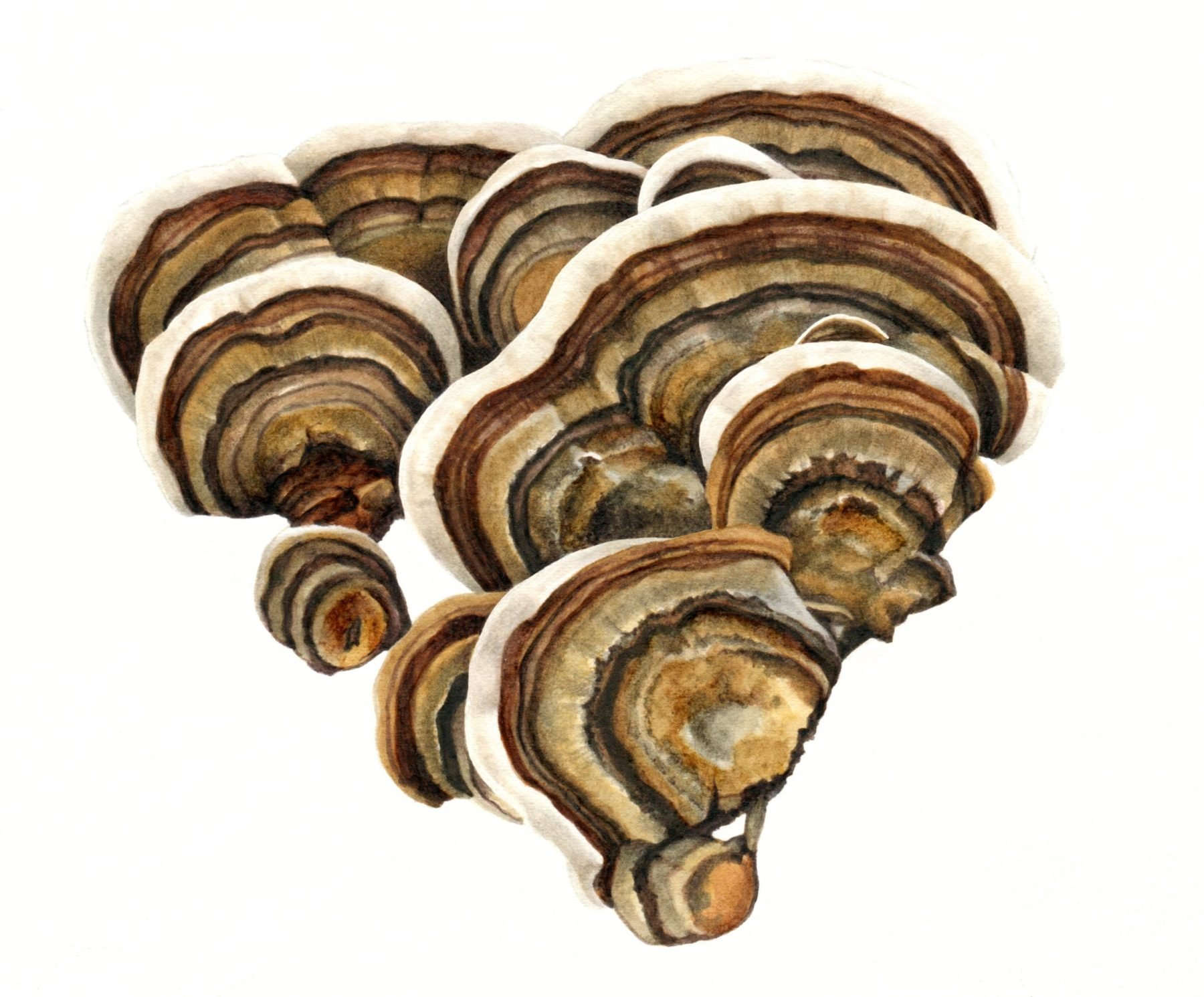
Growing in kidney-shaped tiers on decaying wood and fence posts, rainbow fungus or ‘turkey tails’ flaunts multi-coloured fans of alternating smooth and fuzzy zones. The velvety bands form patterns of yellow to orange to reddish-brown on the tough, leathery flesh. The cap may reach 6cm across. Turkey tail supports immune function and is being studied as a cancer treatment.
Ghost fungus (Omphalotus nidiformis)
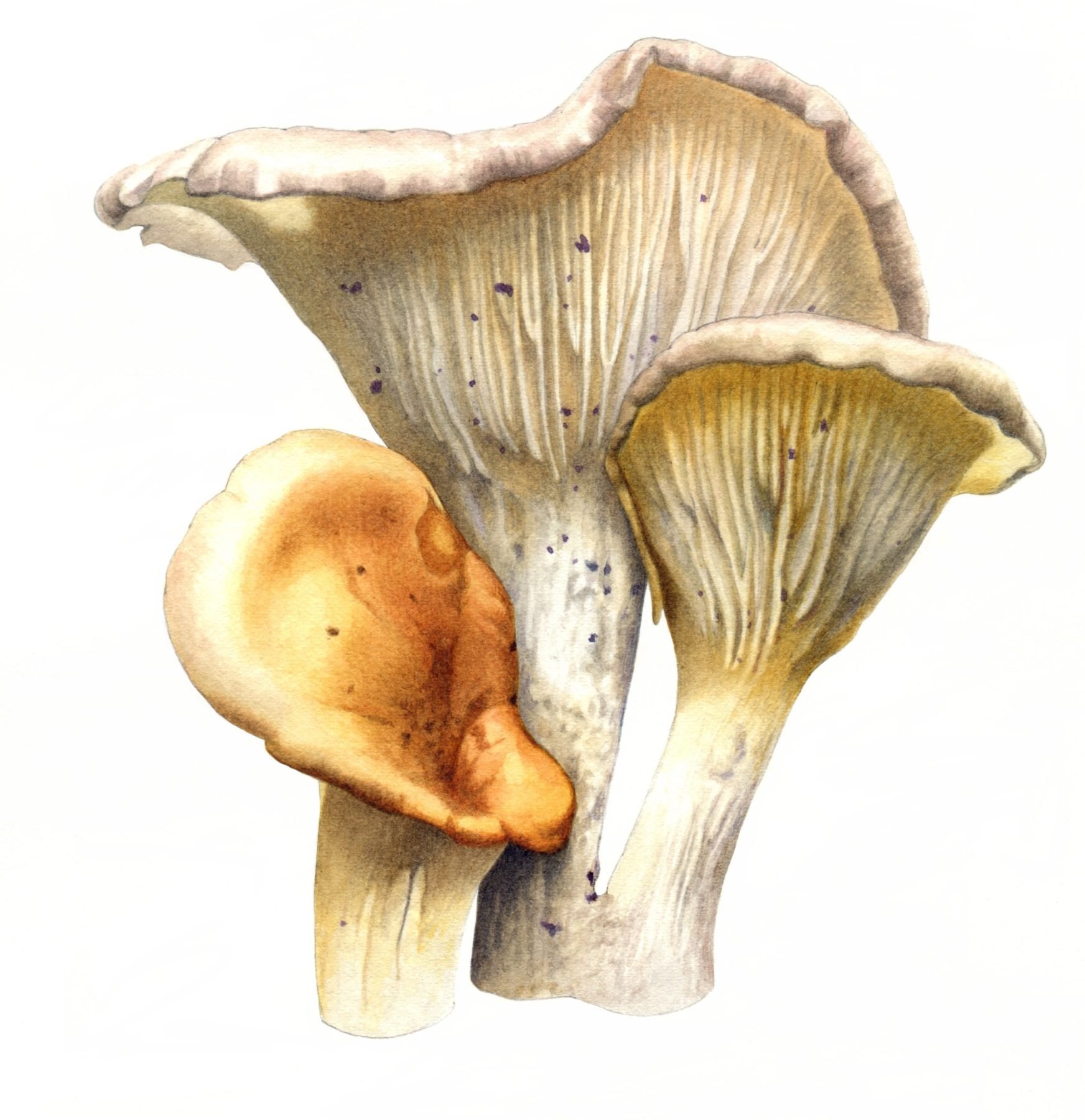
Producing an eerie yellow-green glow, ghost fungus is Australia’s most common luminescent fungus. The luminosity on the under-side of the cap is produced when the enzyme luciferase facilitates a reaction between oxygen and the chemical luciferin. The creamy-white caps can grow to 30cm across and are copper-brown or purple in the centre. They sprout on live wood or eucalyptus stumps, often in tiered formations. This species is highly poisonous.
Anemone stinkhorn (Aseroe rubra)
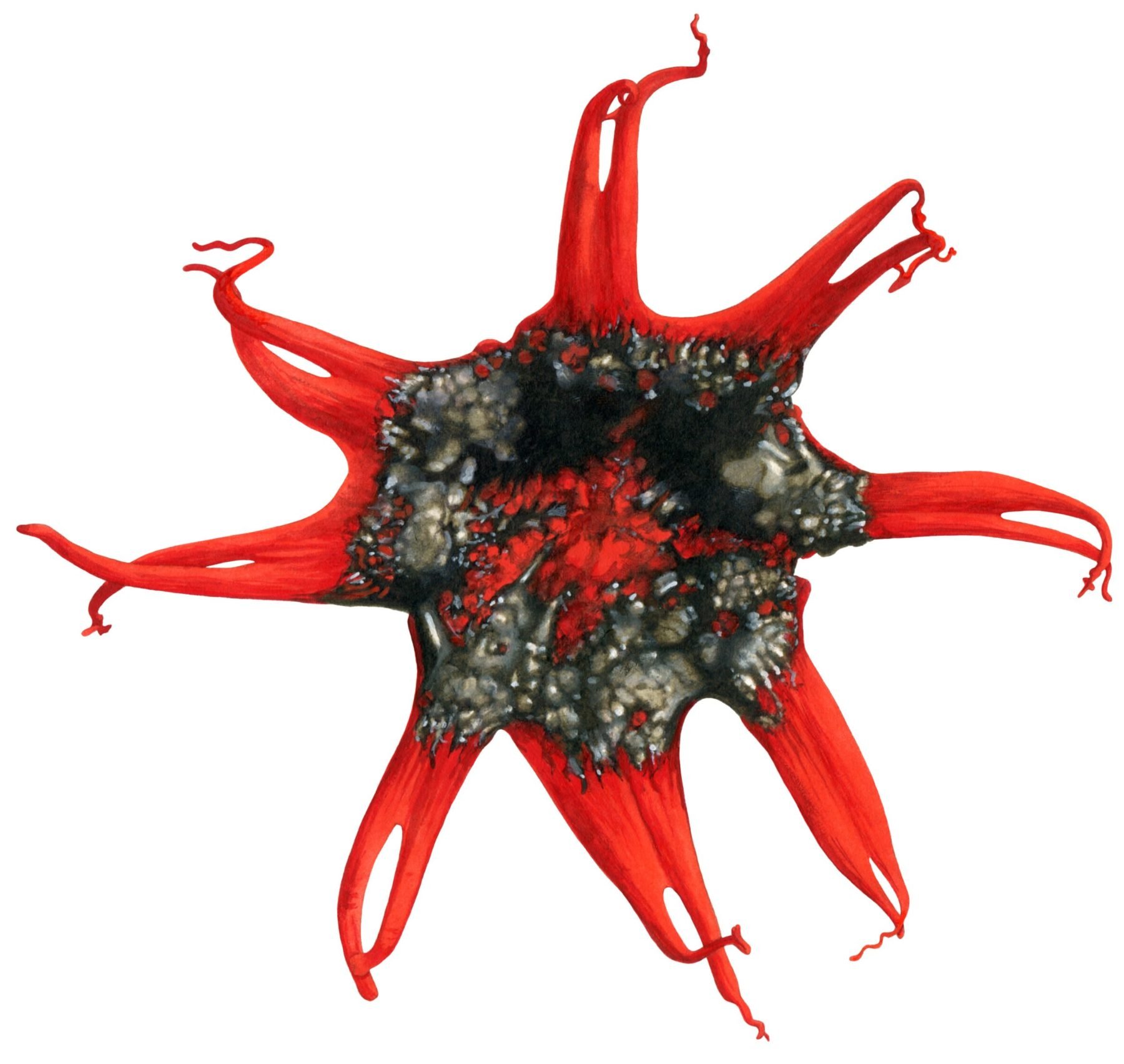
Reaching into gardens like an extraterrestrial claw, anemone stinkhorn is found from alpine grasslands to urban areas. It emerges from a gelatinous ‘egg’ that splits, allowing the stem to project upwards. Six to nine pairs of tentacle-like ‘arms’ extend laterally, revealing a sticky brown puddle of foetid-smelling ‘spore mass’ in the centre. The stinkhorn can be red, orange or yellow, and may grow to 10cm tall.
Pleated Ink-cap (Parasola plicatilis)
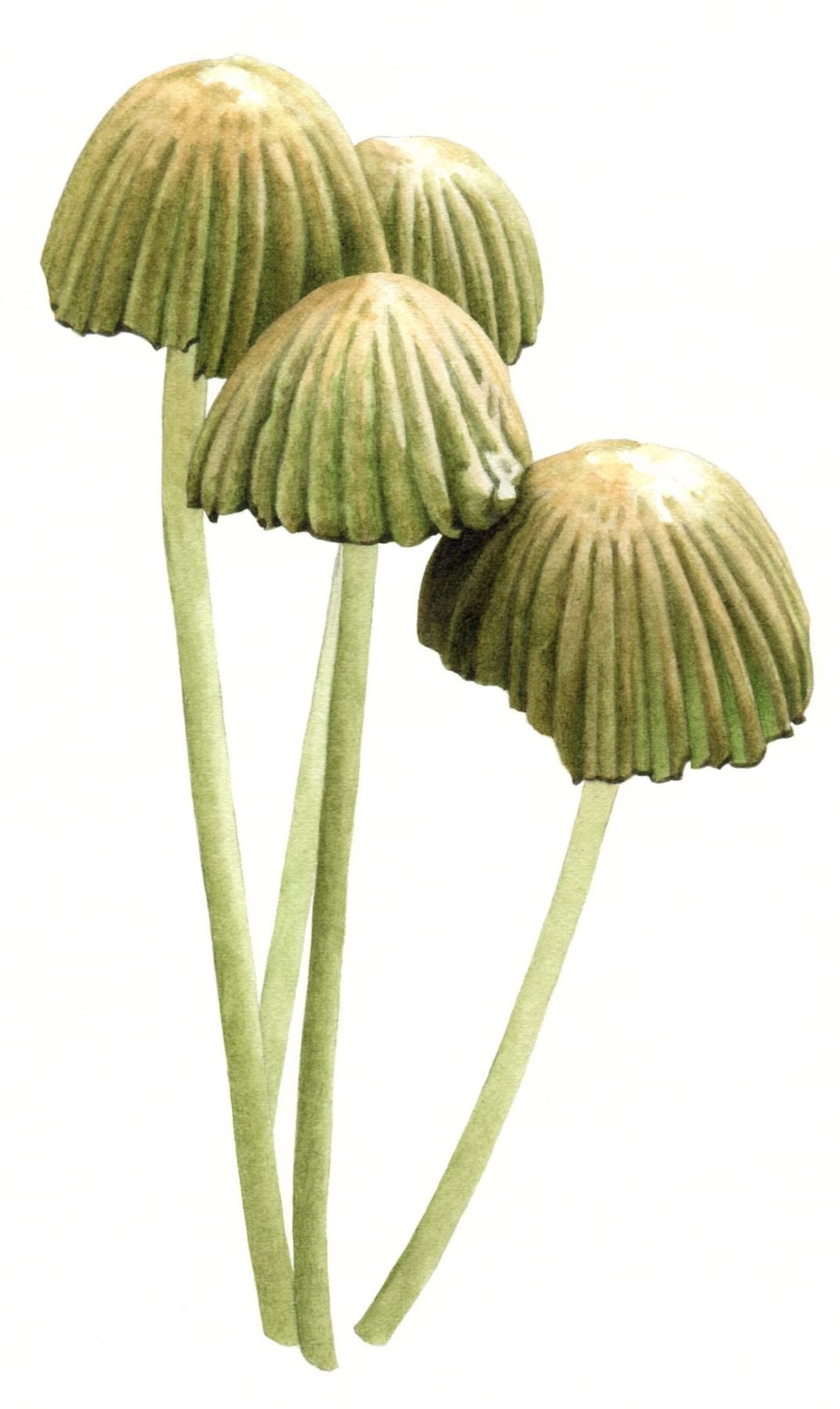
The pleated ink-cap’s nickname — little Japanese umbrella — accurately characterises its parasol-esque cap. Often muted-brown or grey, the cap is thin and papery, with radial pleats. The flesh is pale to greyish-brown and the stem, which may grow to 6cm, is faintly bulbous at the base. The mushrooms can be found in lawns and nature strips either singly or in clusters. When exposed to direct sunlight, the caps wither and die.
White crinoline stinkhorn (Phallus indusiatus)

Gracing the forest floor or garden mulch with its lacy veil, the central stem of white crinoline stinkhorn emerges from a pale pink gelatinous ‘egg’. The stem expands to become spongy, topped with a brown conical cap covered in fine ridges. The skirt, made of white strands resembling chicken wire, extends down from the cap, which may be 25cm tall. As the name suggests, this fungus emits a foetid odour and may grow singly or in groups.
Yellow stainer (Agaricus xanthodermus)
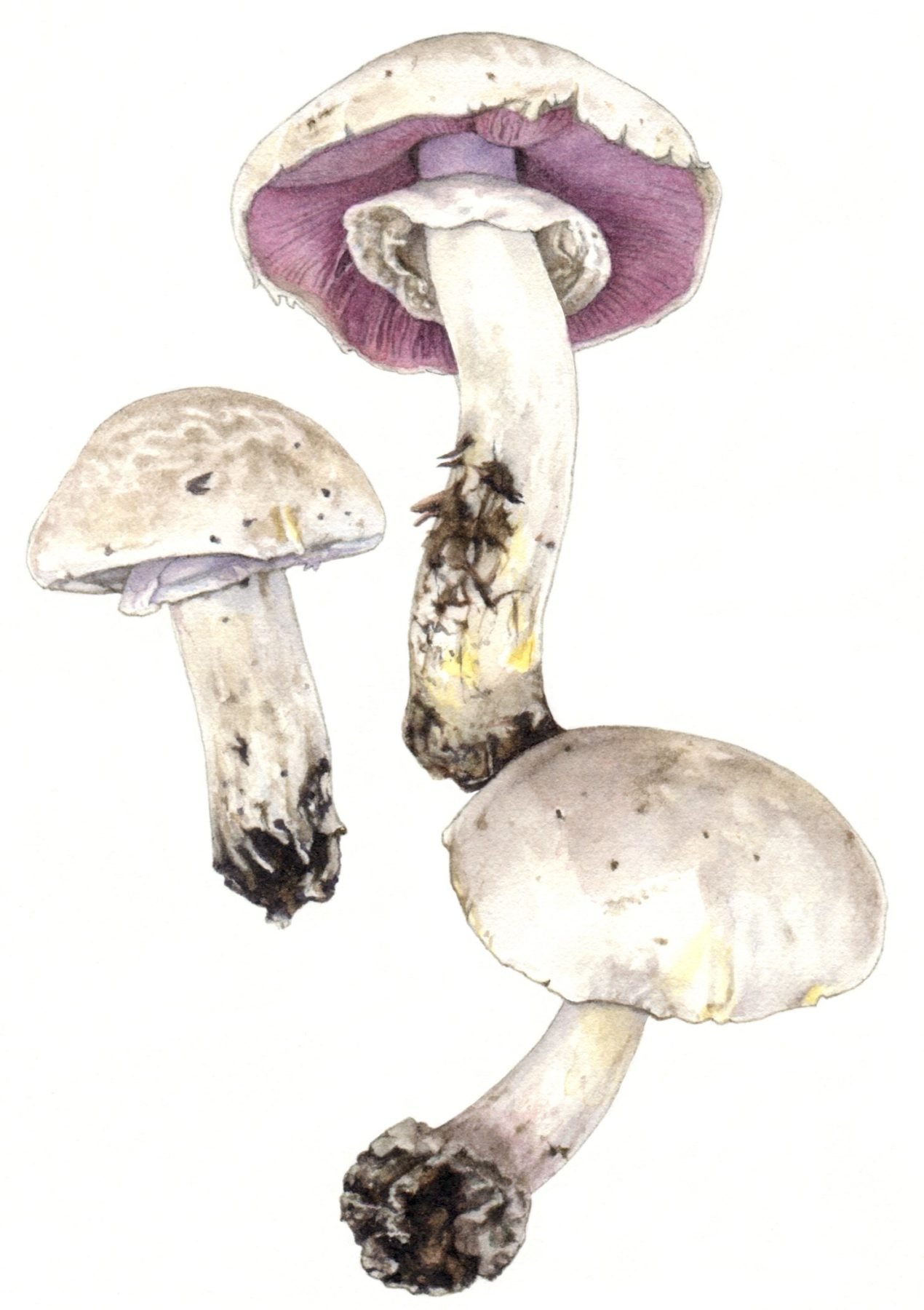
The highly toxic yellow stainer is found growing on its own or in ‘fairy ring’ formations. The off-white to pale-brown flesh stains bright yellow when bruised. The cap may grow to a sizeable 20cm across and its gills shift from pink to brown with maturity. The 1-3cm stem features a distinct double ring. Some say its unique ‘phenolic’ scent — described as sweet and slightly medicinal — is reminiscent of pinot noir.
Fly agaric (Amanita muscaria)
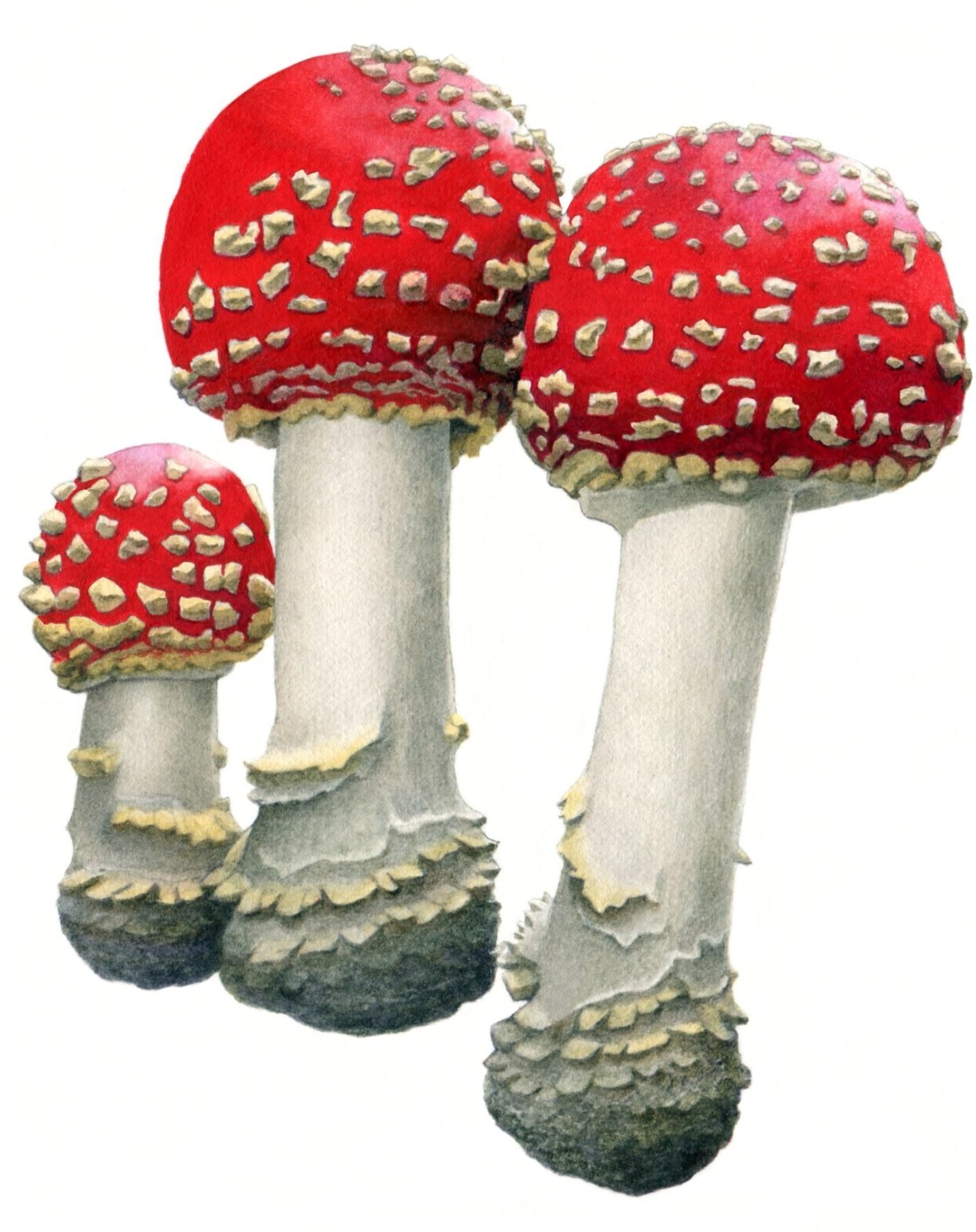
As if plucked from a fairytale, this quintessential toadstool is commonly found popping up through forest litter throughout southern Australia. Fly agaric is non-native and grows in association with introduced oak, birch and pine trees. Its scarlet cap can grow to 25cm in diameter and is dotted with nodular white scales. Fly agaric is highly poisonous and can cause psychoactive effects if consumed.
Redlead roundhead (Leratiomyces ceres)
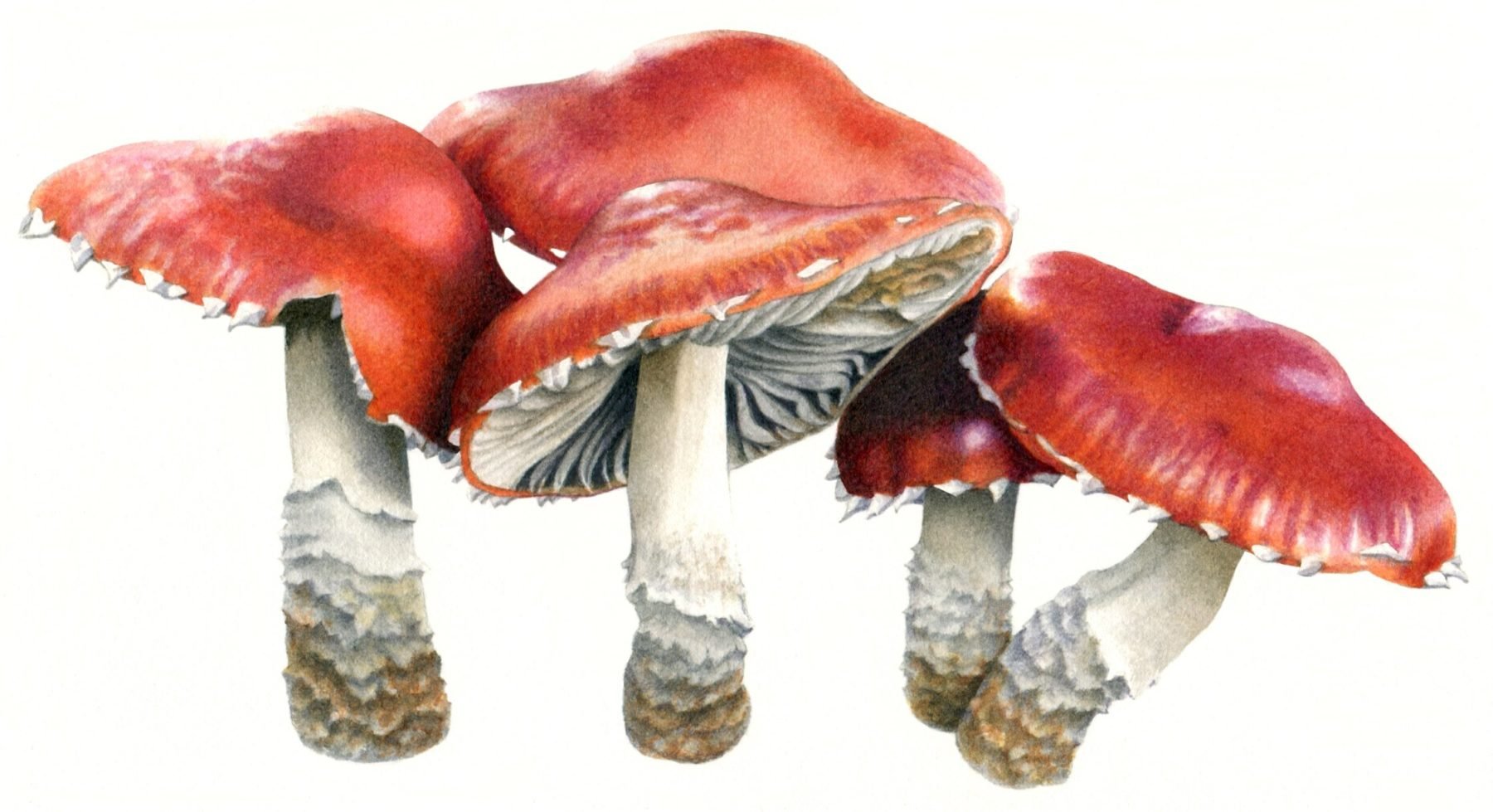
Found within woodchip mulch, lawns, gardens and sawdust, redlead roundhead grows in scattered clusters and gregarious masses. Its cap, which can grow to 6cm across, is usually bright scarlet to rusty-brown, and is sticky when fresh. The white-to-yellowish stem, which stains red-orange with maturity, may grow to 7cm tall.





